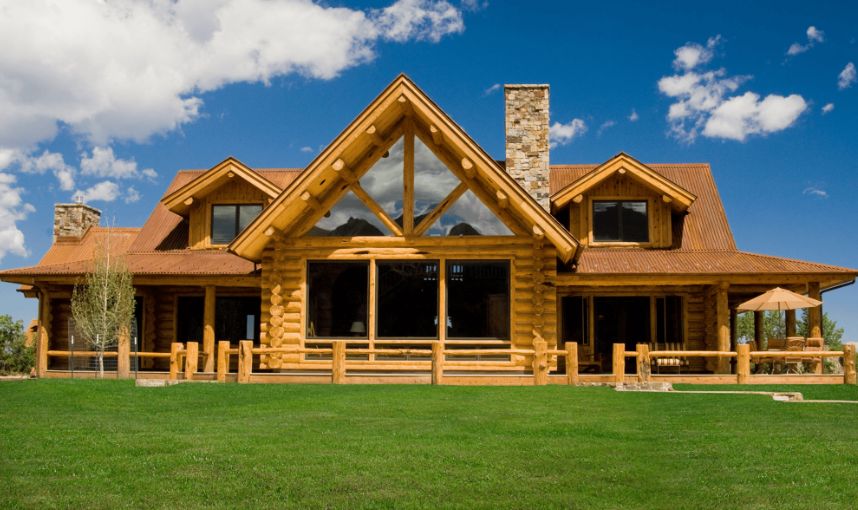Table of Contents
- Introduction
- A Brief History of Log Homes
- The Art of Crafting a Log Home
- Log Homes’ Environmental Benefits
- Design Flexibility and Aesthetic Appeal
- Energy Efficiency in Log Homes
- Maintenance and Longevity
- Common Misconceptions About Log Homes
- The Future of Log Homes
Introduction
Log homes hold a special place in the hearts of those who cherish nature and tradition. From rustic charm to environmental benefits, these homes offer an inviting connection to the natural world. Whether captivated by the serenity of a forest setting or the unique designs, log homes provide an exceptional living experience. With companies like Frontier Log Homes leading the way, building with nature has never been more accessible.
This article explores the history, benefits, and future of log homes. While they may harken back to simpler times, they seamlessly blend with modern techniques and environmental consciousness. We aim to shed light on the multifaceted world of log homes and offer insights into this enduring building style. From energy efficiency to design flexibility, log homes are more than just historical artifacts; they are a viable option for modern sustainable living.
A Brief History of Log Homes
The story of log homes began centuries ago, evolving from simple shelters to architectural marvels. Cultures worldwide, from Scandinavia to Russia, have relied on logs to create sturdy homes that withstand harsh climates. These traditional methods laid the groundwork for today’s refined log home designs. The craftsmanship seen in historical log buildings speaks to the ingenuity and creativity of early architects who utilized available resources to construct durable, weather-resistant homes.
The Art of Crafting a Log Home
Crafting a log home is both an art and a science. Each structure is unique and tailored to its environment and the needs of its inhabitants. Modern builders skillfully blend traditional craftsmanship with cutting-edge techniques, ensuring each log home is aesthetic and functional. The choice of timber, cutting precision, and the intricate fitting of logs requires skill and an eye for detail. As more people turn to sustainable living, the demand for artisanal log home construction continues to grow, offering builders new opportunities to innovate while maintaining traditional techniques.
Log Homes’ Environmental Benefits
In recent years, sustainable building practices have become increasingly important. Log homes offer significant environmental advantages. Logs’ natural insulation properties can reduce energy consumption, while sustainably sourced timber supports ecological conservation. Logs act as natural carbon sinks, trapping carbon dioxide from the atmosphere and helping mitigate climate change. The entire lifecycle of a log home—from construction to demolition—has a potentially lower environmental impact than conventional building materials.
Design Flexibility and Aesthetic Appeal
Beyond their eco-friendly allure, log homes provide remarkable design versatility. Log homes can accommodate diverse aesthetics, whether you favor a traditional cabin look or a more contemporary style. Their distinctive appeal lies in harmonizing natural materials with modern architecture. Interior structures can be customized to include open floor plans, expansive windows for natural light, and even modern amenities such as energy-efficient heating systems. The flexibility in design allows homeowners to create spaces that reflect their style, making each home a true reflection of its owner.
Energy Efficiency in Log Homes
Logs naturally insulate homes, promoting energy efficiency by maintaining indoor temperatures. This can lead to significant cost savings on heating and cooling. As energy prices rise, the inherent efficiency of log homes makes them an attractive choice for environmentally conscious homeowners. The logs’ thermal mass slows the rate at which heat escapes during winter and keeps homes cooler during summer. With proper design and construction, log homes can achieve high levels of energy efficiency, rivaling and sometimes exceeding traditional homes.
Maintenance and Longevity
Like any home, log homes require regular maintenance to ensure longevity. However, with the proper care, they can last as long, if not longer, than traditional homes. Routine inspections and maintenance practices will help preserve the beauty and integrity of log structures for generations. Regular tasks such as sealing, staining, and monitoring potential pest issues are essential. By investing time in maintaining a log home, homeowners enhance its aesthetic appeal and extend its lifespan, ensuring it remains a cherished abode for many years.
Common Misconceptions About Log Homes
Despite their benefits, log homes are sometimes misjudged. Some believe they lack durability or are less energy-efficient than conventional homes. Modern log homes are robust, often exceeding expectations in various performance aspects. Advanced construction techniques and treatments for the logs address several longstanding concerns, such as susceptibility to pests and decay. Additionally, innovations in sealants and finishes have dramatically improved the weather-resistance of log homes, debunking myths and revealing log homes as a stable, secure investment.
The Future of Log Homes
The future of log homes is bright, with innovations continually reshaping the industry. Advancements in construction techniques promise greater accessibility and sustainability. As people seek harmonious living spaces, log homes are poised for wider adoption and appreciation. With the resurgence of interest in eco-friendly living, the log home industry will explore new technologies and materials that enhance sustainability without compromising these structures’ charm and traditional appeal.

